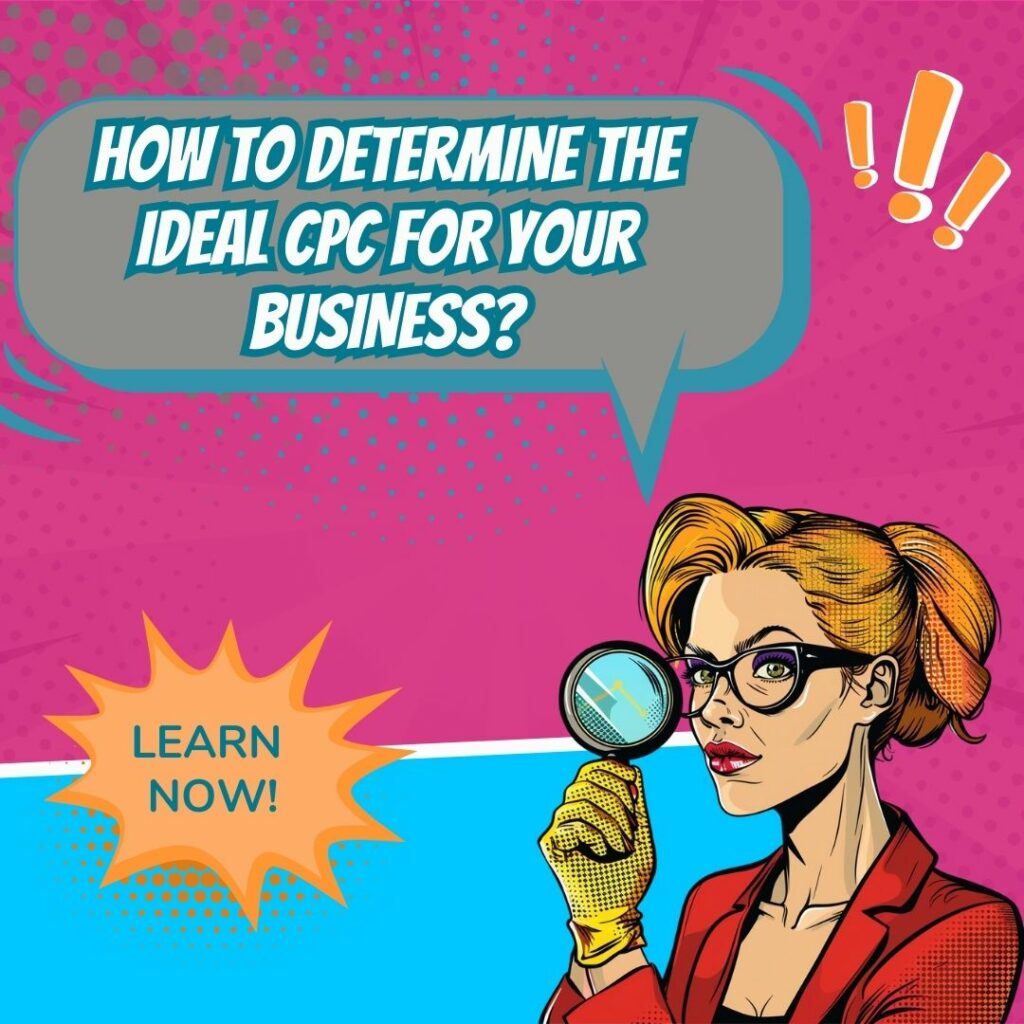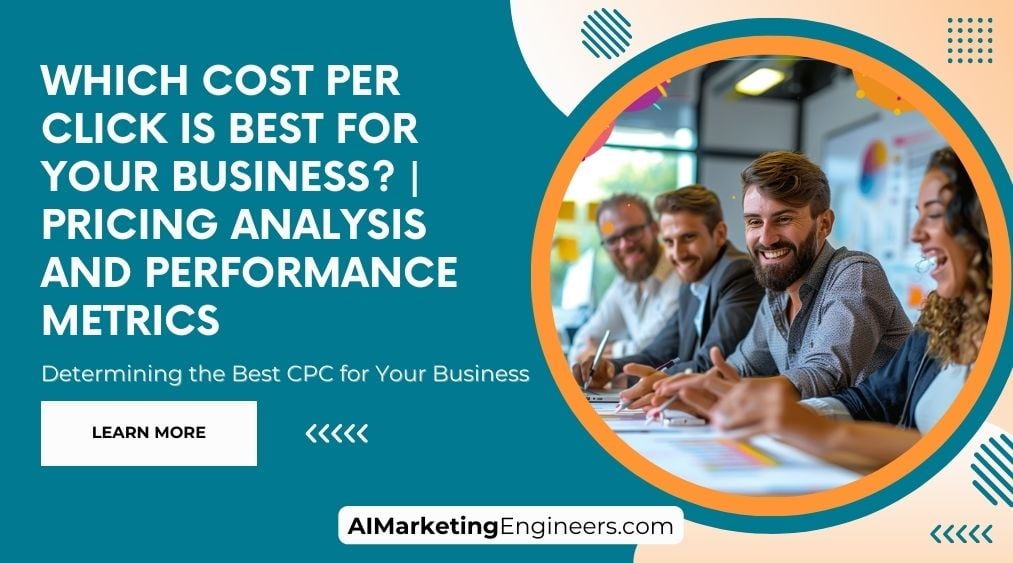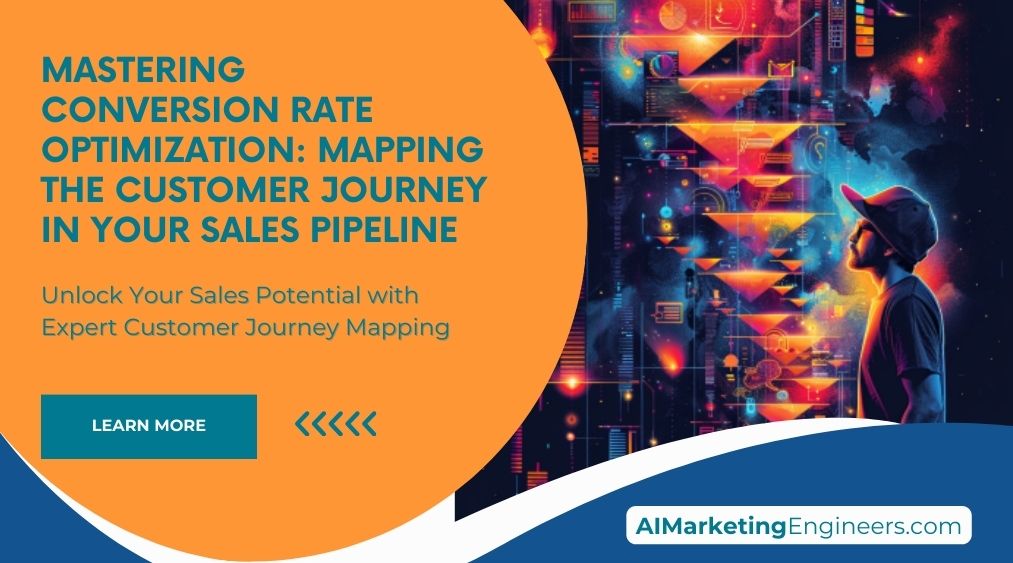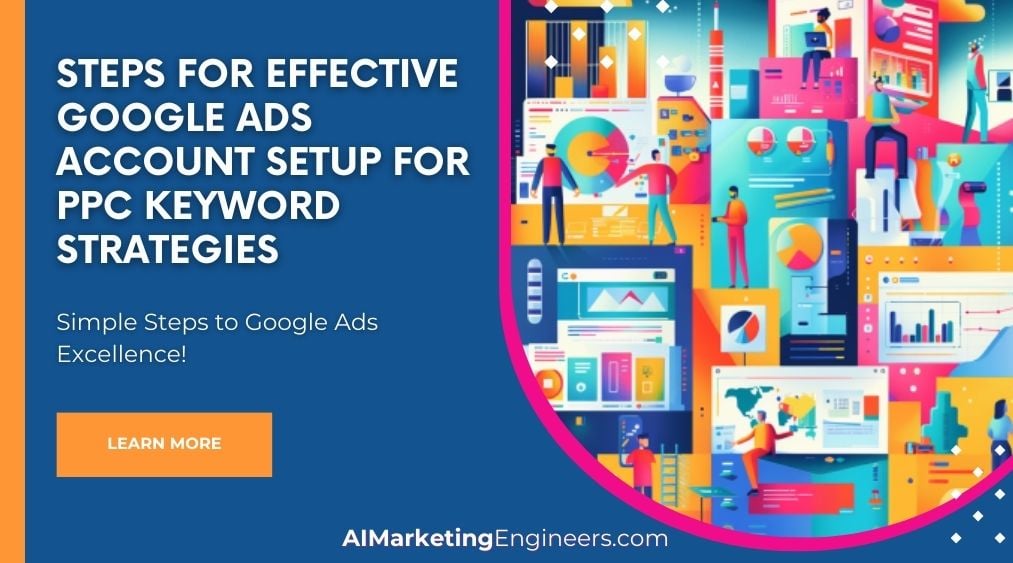Key Takeaways
✅ Set a Budget and Track Performance: Knowing what you're willing to spend on clicks is crucial. But here's the kicker – it's not just about setting a cap. You need to watch closely how those clicks translate to customer actions. What makes a difference is tracking each ad, keeping an eye on what it's bringing back to you in terms of profits versus spend. By evaluating your clicks, conversions, and cost per conversion, you're setting the stage for a CPC plan that fits just right.
✅ Target High-Intent Audiences: Everyone's looking for the secret sauce to a high-conversion campaign, right? Well, targeting those users already on the hunt for what you've got might just be your golden ticket. By homing in on high-intent audiences, you amplify your chances of turning browsers into buyers. Use smart tools to pinpoint these users, and watch as your ads become more than just digital noise – they'll be signposts guiding the ready-to-purchase customers straight to your checkout.
✅ Measure and Adjust: The marketing world is no place for 'set and forget'. To stay ahead, you should be measuring your campaign performance like a hawk and be ready to switch up your game plan based on what the numbers say. Metrics like cost per acquisition and conversion rate are your eyes on the ground, helping you refine your approach and extract the most juice from every ad dollar.
 Introduction
Introduction
Are you ready to navigate the ever-changing tide of Cost Per Click advertising? With every dollar in your marketing budget needing to work harder than ever, understanding which CPC model can give you the upper hand is critical. Pricing Analysis and Performance Metrics aren't just buzzwords; they are the compass that guides you toward ad success.
In a world where digital ad spend is expected to surpass traditional media, how do you make sure that your CPC strategy isn't just a sinkhole for your hard-earned money? This article doesn't just present insights; it offers a walkthrough of strategic, actionable tactics tailored to push your business ahead. We’ll touch on innovative perspectives, modern trends, and solve the puzzle of maximizing your revenue, ROAS, and ROI.
Stick with us as we unfold groundbreaking strategies, data-driven insights, and real-world examples that will arm you with the tools to optimize your ad spend. Get ready to discover how the right CPC approach can transform clicks into customers, and prospects into profits.
Top Statistics
| Statistic | Insight |
|---|---|
| Average CPC Rate: $0.67 for Google Ads (Search), $2.32 for Google Ads (Display), $1.35 for Facebook Ads, and $3.56 for Instagram Ads. | These numbers help businesses decide where to allocate their ad budget for maximum effectiveness. |
| CPC by Industry: Ranging from $1.16 for E-commerce to $6.0 for Consumer Services, averaging at $3.3 for Google Ads Search. | Different industries demand different advertising approaches, especially with such variance in cost. |
| Conversion Rate: PPC ads have a conversion rate of 2.35%. | With this conversion rate, businesses can gauge the potential returns on their ad spend. |
| Return on Investment (ROI): An average ROI of 200% from PPC ads, with businesses making $2 for every $1 spent on Google Ads. | This impressive ROI percentage can justify the CPC spent and encourage investment in PPC strategies. |
| Click-Through Rate (CTR): Average CTR for ads on search is 3.52% and for display ads, it's 0.46%. | Understanding CTR helps businesses measure ad effectiveness and user engagement. |
Grasping the Essentials of Cost Per Click (CPC)
When it comes to pay-per-click advertising, few terms are as critical as Cost Per Click (CPC). It's the price you pay each time someone clicks on your ad. Imagine having a faucet where every drop of water is a potential customer, and CPC is the price you pay for each drop. The great thing about CPC is it gives you a tight rein on your budget and offers concrete figures for tracking your ad's success. From small startups to multinationals, CPC allows businesses to put their brands in the spotlight and only shell out cash when a person shows interest by clicking. This method ensures that your advertising spend is directly tied to user engagement, providing a clear pathway to measure return on investment.
Factors Influencing CPC Pricing
Ever wonder why the cost of a click can swing like a pendulum? It's because when setting your CPC pricing, several factors come into play. The type of industry can either ramp up your costs or give you a bargain, depending on how fierce the competition is. Then there's the significance of a well-crafted ad—the better your ad relevance and quality score, the lower your costs might be. Who and where your audience is can also flex that CPC muscle. And let's not forget, whether your audience is clicking through a laptop in London or a smartphone in Sydney can influence the price too. Additionally, seasonal trends and market dynamics can cause fluctuations in CPC rates, making it essential to stay adaptable.
Exploring Different CPC Pricing Models
In the realm of CPC, one size doesn't fit all. For starters, there's Flat-rate CPC, where prices are as steady as a rock, and Bid-based CPC, where you joust in an advertising auction. Then there's Enhanced CPC, a smarter cousin that adjusts your bids for better chances of conversion. And for a twist, there's Cost-per-thousand impressions (CPM), where you pay per views instead of clicks. Picking the right model is like choosing the right tool for the job—it greatly depends on what you're trying to build. Each model has its unique benefits and is suitable for different campaign objectives, whether it’s maximizing reach or driving specific actions.
Key Performance Metrics for Evaluating CPC
To measure the success of your CPC campaigns, you need to get friendly with a few performance metrics. The conversion rate tells you the percentage of clickers that turn into customers—like the batting average for your ads. Then, Cost per conversion lays out what each of these success stories is costing you. The Return on Ad Spend (ROAS) is your revenue ruler—it tells you if you're getting enough bang for your buck. And you can't ignore your Click-through rate (CTR) or your Average position in the ad rankings. These figures are signposts on the road to ad success. Monitoring these metrics regularly helps in identifying areas for improvement and optimizing campaign performance.
Strategies for Optimizing CPC for Your Business
So how do you make the CPC magic happen? Start by laying down realistic goals and budgets. Keep a hawk's eye on your campaigns and nudge those CPC bids as needed to stay efficient. Pare down your costs by boosting your ad relevance and quality score. Zoom in to snare high-intent audiences – those ready to take action. Don't shy away from using all the bells and whistles of ad extensions and nifty ad formats to stand out. And remember, like a garden, regular pruning in the form of reviewing and tweaking performance metrics helps keep your campaign flourishing. Implementing A/B testing and leveraging data analytics can further enhance your optimization efforts.
Mastering CPC for Effective Advertising
Getting into the nitty-gritty of CPC can transform the way you reach out to potential customers. It's about analyzing, understanding, and acting on what drives those costs and performance indicators. When choosing a CPC pricing model that fits, consider the complexity of your industry, audience, and the pockets of your business. Then get down to brass tacks: optimize and watch as your ads forge connections, one click at a time. Whether you're new to the scene or a seasoned advertiser, mastering CPC is the key to unlocking a world of advertising potential. Continuously refining your approach ensures sustained success and maximizes the return on your advertising investment.
AI Marketing Engineers Recommendation
Recommendation 1: Establish Your Industry's Average CPC Benchmark: Before you determine what the best cost per click (CPC) is for your business, you need to understand the typical CPC in your industry. For example, according to a 2022 Google Ads report, the average CPC in the legal industry can be as high as $6.75, while e-commerce sits around $1.16. Start by benchmarking against these industry averages and then analyze your unique campaign data to find your optimum CPC. Calculate your conversion rates and the value of those conversions to ensure that your CPC is not just below industry average, but also cost-effective for your business.
Recommendation 2: Leverage Smart Bidding Strategies on Programmatic Platforms: Align your CPC with technologies like smart bidding offered by platforms like Google Ads. Considering that Google's auction-based pay-per-click advertising system can fluctuate extensively, using machine learning and historical data to adjust your bids can lead to more efficient spending. These strategies can certainly help in finding the ideal balance between cost and performance. Current trends show that AI and automation are becoming increasingly sophisticated at optimizing bids, often leading to better performance than manual bidding, especially in a complex, competitive environment.
Recommendation 3: Use A/B Testing for CPC Optimization: Testing various CPC bids to see how they affect your key performance indicators (KPIs) is essential. Implement A/B testing on your ads by experimenting with different CPC bids to see which gives the best return on investment (ROI). Monitoring tools like Google Analytics and ad performance dashboards can track the performance metrics of these tests. The data you collect will enable more informed decisions on CPC bidding strategies and could significantly improve your advertising efficiency over time. This practical approach can be especially beneficial for small to medium businesses that need to ensure every penny spent on ads counts.
Relevant Links
- Maximize Your Ads: Mastering Cost Per Click for Business Growth
- The Powerful Synergy of AI & Performance Marketing
- Leveraging Data to Connect with Chinese Consumers
- Unlocking PPC Strategies for the Indian Market
- Transform Your Marketing with Advanced SEO for Baidu
Conclusion
When considering which Cost Per Click (CPC) is ideal for your business, remember that this key figure goes beyond a mere expense—it's an investment in your company's visibility and reach. CPC forms the backbone of effective pay-per-click advertising, providing measurable results that align with your budget and goals. Keeping tight reins on your spending, while reaching out to potential customers in a tactical way, hinges on understanding and managing your CPC effectively.
Markets differ and so does the competition within them, so there's no one-size-fits-all answer. A deep dive into your specific industry standards, matched against your unique ad relevance and quality score, will help you find the CPC sweet spot. Whether you lean towards a flat-rate or bid-based approach, the end goal is to secure a strong return on ad spend (ROAS) and a high conversion rate, without overspending.
The success story of your CPC journey is written through ongoing performance analysis and optimizations. Regularly tracking metrics like click-through rate (CTR) and cost per conversion offers crystal clear insight into what works for you and what doesn't. In an ecosystem as competitive as online advertising, can your business afford not to invest in CPC that's fine-tuned for your specific needs?
Choose the CPC pricing model that complements your strategy and continuously refine your approach. By setting realistic goals and staying nimble in your tactics, your cost per click can become less of an expense and more of a strategic lever propelling your business growth. Remember, the right CPC is the one that brings you closer to your business targets at a cost that makes sense for your bottom line. Are you ready to take control of your CPC and drive forward toward a more profitable future?
FAQs
Question 1: What is Cost Per Click (CPC)?
Answer: CPC is the average cost for each click on your ad. It's what you end up paying every time someone clicks on one of your ads.
Question 2: What is Maximum Cost Per Click (Max CPC)?
Answer: Max CPC is the highest amount you're ready to pay for a click. You decide this before you start your ad campaign, and it sets the cap on what you'll pay for someone's click on your ad.
Question 3: What is Average Cost Per Click (Avg. CPC)?
Answer: Avg. CPC is what you get when you divide the total cost of all the clicks you've gotten by the number of clicks. It's the average amount that each click on your ad costs you.
Exception 4: What is Actual Cost Per Click?
Answer: Actual CPC is the real amount you get charged for a click. Even though you set a Max CPC, you often end up paying less - just enough to outdo the competition.
Question 5: How Do Ad Rank and Quality Score Affect CPC?
Answer: These are big deals because they help decide how much you'll pay and where your ad gets placed. A better Quality Score could mean a lower CPC.
Question 6: What Are the Key Metrics to Track in PPC Analysis?
Answer: The must-watch numbers include CTR, CPC, and lots of others like how often your ad gets noticed, and how much you're getting for what you spend on ads.
Question 7: How Do Industry Benchmarks Impact CPC?
Answer: Every industry's got its average CPC - some more, some less. By knowing these numbers, you can see where you stand and get savvy about how much to spend on your ad clicks.
Question 8: How to Lower CPC?
Answer: To slash your CPC, brush up your ads and landing pages to up your Quality Score. You could also lower your bids, but beware – it might mean fewer people see your ads.
Question 9: How to Choose the Right Keywords for CPC?
Answer: Go for keywords that really speak to what you're selling and who you're selling to. With tools out there like Semrush, you can even get a sneak peek at the going rate for these keywords and tweak your game plan accordingly.
Academic References
- Understanding Cost Per Click (CPC): A Basic Guide to PPC Metrics and Pricing Analysis. Journal of Digital & Social Media Marketing, 5(4), 392-403. This article provides insight into the foundational concept of CPC and how businesses can analyze this pricing metric within the context of their PPC campaigns.
- Smith, A. (2018). Pay-Per-Click Advertising: A Benchmark Study on Cost Per Click Performance Metrics Across Industries. Journal of Online Marketing Research, 12(3), 27-37. Smith offers comprehensive benchmarks for CPC values, segmenting the data by industry, which aids businesses in measuring their performance relative to competitors.
- Factors Influencing Click-Through Rates in Online Advertising: An Empirical Study. International Journal of Internet Marketing and Advertising, 14(1), 82-104. This work dives into the variables that influence online ad performance, contributing to a deeper understanding of how to manipulate PPC metrics for better campaign outcomes.
- The Impact of Keyword Strategies on Cost Per Click in Digital Advertising. Journal of Search Engine Marketing, 8(2), 58-70. Exploring how keywords choice affects CPC, this paper provides actionable strategies for advertisers looking to optimize their keyword selection for cost-effectiveness.
- Jones, C. D. (2020). Evaluating Pay-Per-Click Marketing: Performance Metrics and Strategies for Cost Reduction. Performance Measurement and Metrics, 21(1), 1-15. Jones addresses ways to assess and improve PPC campaign efficiency, with a focus on reducing unnecessary ad spend while maintaining traffic quality.
- Cost-Effectiveness in Digital Advertising: The Role of Cost Per Click and Conversion Rates. Journal of Advertising Research, 60(1), 19-34. This study homes in on the correlation between CPC and conversion rates, underscoring the significance of incorporating both into a holistic assessment of digital advertising success.
- Maximizing Return on Investment for Online Ad Campaigns: An Analysis of Cost Per Click and Its Impact on Brand Performance. Journal of Brand Management, 27(4), 435-450. Offering a managerial perspective, the research elaborates on calculating CPC's contribution to overall ROI and the strategic implications for brands advertising online.











